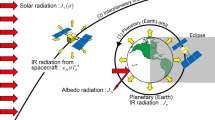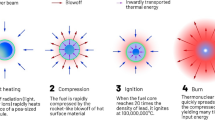Abstract
Many space agencies are working on solutions for manned operations on the Moon, both on its surface and in cislunar space. In such a scenario, with stable human presence, a launch facility would be needed and launch vehicles could take advantage of the benefits of the lunar environment. In the present paper missions to Earth (to a geostationary orbit) and to Mars (to an areostationary orbit), from a lunar launch facility, has been studied. The trajectories are analysed by using an ephemeris model, taking into account four attractive bodies (Earth, Moon, Sun and Mars). In the first phase of the two missions, the launcher places the spacecraft on a circular lunar orbit by using liquid, solid or hybrid propulsion systems. The latter solution is analysed assuming in situ propellant production using aluminum and oxygen, elements in which the moon is very rich. In the second phase of both the missions, a minimum energy trajectory is studied, which, exploiting the Luni-Solar perturbations, allows the spacecraft to escape the gravitational field of the Moon. In the mission to Earth, this manoeuver puts the spacecraft on a very high and inclined elliptical orbit. The last phase involves a circularization manoeuvre towards the GEO and transfers are studied for two different initial inclinations, using an electric engine. In the mission to Mars, the escape impulse is used to leave both the Earth-Moon and Sun-Earth systems. The interplanetary phase is analysed for several transfer final times and considering an electric engine with variable specific impulse. Finally, the performance of a lunar launch facility is compared to that of a traditional Earth facility, showing great advantages are obtained in terms of payload ratio.










































Similar content being viewed by others
Notes
SpaceLaunchReport, https://www.spacelaunchreport.com.
Space.Skyrocket.de, https://space.skyrocket.de/index.html.
SpaceX, https://www.spacex.com/falcon-heavy.
References
Battin, R.H.: An Introduction to the Mathematics and Method of Astrodynamics, Revised Edition. American Institute of Aeronautics and Astronautics, New York (1999)
Celletti, A., Perozzi, E.: Celestial Mechanics: The Waltz of the Planets. Springer, Berlin (2007)
Chang Diaz, F., Braden, E., Johnson, I., Hsu, M.M., Yang, T.F.: Rapid mars transits with exhaust-modulated plasma propulsion (1995). NASA Technical Paper 3539
Circi, C.: Lunar base for mars missions. J. Guid. Control Dyn. 28(2), 372–377 (2005)
Brown, D.L., Brian, B.E., Haas, J.M.: Air force research laboratory high power electric propulsion technology development. In: IEEE Aerospace Conference (2010)
Engle, J., Moseman, T., Duggan, M.: A resilient cislunar spacecraft architecture to support key mars enabling technologies and operation concepts. In: AIAA Space Forum, Long Beach, California, vol. 13–16 (2016)
Gao, Y., Wang, Z., Zhang, Y.: Analytical design methods for transfer trajectories between the Earth and the lunar orbital station. Astrophys. Space Sci. 363(10), 206 (2018)
Hepp, A.F., Linne, D.L.: Production and use of metals and oxygen for lunar propulsion. AIAA/NASA/OAI Conference on Advanced Space Exploration Initiative Technologies 19(3) (1996)
Hull, D.G., Harris, M.W.: Optimal solutions for quasiplanar ascent over a spherical moon. J. Guid. Control Dyn. 35(4), 1218–1224 (2012)
Wickman, J., James, E.: Gelled liquid oxygen/metal powder monopropellants. In: AIAA/SAE/ASME/ASEE 28th Joint Propulsion Conference and Exhibit, 92-3450 (1992)
Knight, T., Anghaie, S.: Estimation of specific mass for multimegawatt NEP systems based on vapor core reactors with MHD power conversion. In: AIP Conference Proceedings (2004)
Liu, W., Wu, W., Zhu, S., Shang, H.: 3-dimensional lunar ascent reference trajectory optimization and analyses via Gauss pseudospectral method. In: Chinese Control and Decision Conference (CCDC) (2011)
Longmier, B.W., Squire, J.P., Olsen, C.S., Cassady, L.D., Ballenger, M.G., Carter, M.D., Ilin, A.V., Glover, T.W., McCaskill, G.E., Chang Diaz, F., Bering, E.A. III: Improved efficiency and throttling range of the vx-200 magnetoplasma thruster. J. Propuls. Power 30(1), 123–132 (2014)
Ma, L., Shao, Z., Chen, W., Lv, X., Song, Z.: Three-dimensional trajectory optimization for lunar ascent using Gauss pseudospectral method. AIAA Guidance, Navigation, and Control Conference 26(2) (2016)
Meyer, M.: Design issues for lunar in situ aluminum/oxygen propellant rocket engines. In: AIAA Aerospace Design Conference (1992)
Meyer, M.: Powdered aluminum and oxygen rocket propellants: Subscale combustion experiments (1993). NASA Technical Memorandum 106439
Mingotti, G., Gurfil, P.: Mixed low-thrust invariant-manifold transfers to distant prograde orbits around mars. J. Guid. Control Dyn. 33(6), 1753–1764 (2010)
Miyazaki, K., Takahashi, K., Sasaki, T., Kikuchi, T., Harada, N.: Study on specific mass of nuclear electric propulsion system with closed cycle mhd generator. In: AIAA/ASME/SAE/ASEE Joint Propulsion Conference (2014)
Palaszewski, B., Zakany, J.: Metallized gelled propellants; oxygen/rp-1/aluminum rocket combustion experiments. In: AIAA/SAE/ASME/ASEE 23rd Joint Propulsion Conference and Exhibit, 95-2435 (1995)
Hofer, R.R., Randolph, T., Oh, D.Y., Snyder, J.S., De Grys, K.H.: Evaluation of a 4.5 kW commercial Hall thruster system for NASA science missions. In: 42nd AIAA/ASME/SAE/ASEE Joint Propulsion Conference Exhibit (2006)
Rinalducci, A.: A launch strategy for high inclination orbit missions from the San Marco equatorial range. Acta Astronaut. 41, 559–568 (1997)
Vadali, S., Nah, R., Braden, E.: Fuel-optimal, low-thrust, three-dimensional Earth – mars trajectories. J. Guid. Control Dyn. 24(6), 1100–1107 (2001)
Vadali, S., Nah, R., Braden, E., Johnson, I.L. Jr.: Fuel-optimal planar Earth – mars trajectories using low-thrust exhaust-modulated propulsion. J. Guid. Control Dyn. 23(3), 476–482 (2000)
Zhang, Z., Gong, S., Li, J.: The fuel-optimal trajectory for finite-thrust lunar ascent. Aerosp. Sci. Technol. 39, 675–684 (2014)
Zurawski, R., Green, J.: An evaluation of metallized propellants based on vehicle performance. In: AIAA-SAE-ASME-ASEE 23rd Joint Propulsion Conference and Exhibit, 87-1773 (1987)
Author information
Authors and Affiliations
Corresponding author
Additional information
Publisher’s Note
Springer Nature remains neutral with regard to jurisdictional claims in published maps and institutional affiliations.
Rights and permissions
About this article
Cite this article
Moretto, A., Circi, C. Missions to Earth and Mars using a lunar launch facility. Astrophys Space Sci 365, 83 (2020). https://doi.org/10.1007/s10509-020-03801-w
Received:
Accepted:
Published:
DOI: https://doi.org/10.1007/s10509-020-03801-w




